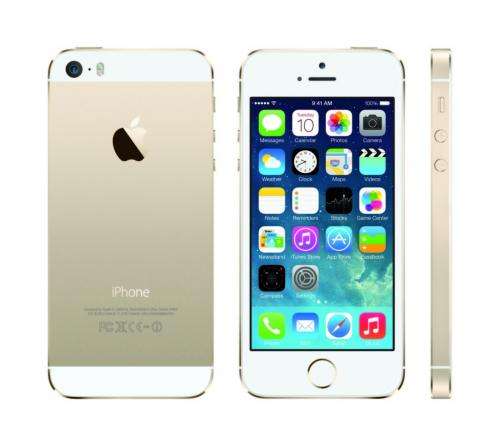Apple's Touch ID: Time to come to grips with a touchy subject

Apple's latest and greatest – the iPhone 5s – met a muted reception last week in San Francisco. Although the device's admittedly evolutionary-not-revolutionary updates target early adopters and high-end consumers, industry critics declared post-launch that its incremental set of new features means "we live in boring times".
Looking at a device like this might be prosaic, perhaps, if the iPhone 5s didn't just represent a new set of upgrades. It marks a milestone in our nascent relationship with mobile technology – a refinement of the sum of years of innovations in arguably the most competitive product sector the world has ever seen.
Touch ID, Apple's new fingerprint sensor introduced on the 5s, marks a transition point from where we interface with technology – clumsily typing away on virtual keyboards, turning "pages" of e-books in our quest to simulate the real, pretending the laws of physics actually apply to pixel-based objects we move around on our four-inch screens.
The iPhone 5s marks the beginning of our technologies interfacing with us.
For years we've used mobile devices to update our Facebook profiles, discuss our lives, search for information, enjoy music, and even check in to flights. If Apple's strategy goes according to plan, soon enough we might even use an iWallet for many of our purchases.
Upgrade by upgrade, we have been nudged ever closer to integration with these devices. In 2009, Apple gave us control of its 3GS with voice commands. With the launch of the iPhone 4S in 2011, Siri, a new voice interface, enabled us to talk to our devices using everyday language. With each of these features came a powerful new chip designed specifically to handle these tasks.
Powerful ideas have led to applications and improved hardware to run these programs. Over the past few years, for better or worse, our personal mobile "life companions" are beginning to understand us.
Biometric keychains: Touch and go
Does this mean that our technologies have become intelligent? Empowered? Perhaps, but it manifests to a greater degree the ambient capabilities of these devices we utilise to conduct our lives. It means that we rely more than ever on our devices like the iPhone 5s to function as human beings.
People now make short films about the trials and tribulations of making it through an entire day without their smartphone. Soon however, this fear may be fully realised: Touch ID means that without our bodies and our devices, access to our lives – both online as well as offline – may be impeded. As Rich Mogull from MacWorld wrote last week:
Apple clearly stated that it considers phones to be keys, which indicates it's heading down the path of making your phone, and your fingerprint, the keys to your digital life […] your physical life, too, as door locks, home alarms, [and] payment cards [are] stored on your phone […] unlocking your phone with your fingerprint to access online and real world services will someday seem entirely normal.
Ironically, our bodies now must make physical contact with devices dictating access to the real; Apple's Touch ID sensor can discern for the most part if we are actually alive. This way, we don't end up trying to find our stolen fingers on the black market, or prevent others from 3D scanning them to gain access to our lives.
This is a monumental shift from when Apple released its first iPhone just six years ago. It's a touchy subject: fingerprinting authentication means we confer our trust in an inanimate object to manage our animate selves – our biology is verified, digitised, encrypted, as they are handed over to our devices.
On the sociological forum Cyborgology, The New Inquiry's Adam Rothstein reflexively describes this new reality from a psychoanalytic lens:
Together, the psyche and our electronics form their own technological space. Like a new device, we slowly become familiar with it by trying it, figuring out the buttons under our fingers. The psyche is not a machine, but if we are going to use machines to alter the psyche, we should probably be digging deeper into both, to become knowledgeable users. But what is the definition of a knowledgeable user, when we are only just beginning to discover the full extent of the technology? Behind each question displayed on a screen, lies more screens, with more questions.

The Internet of us
Before we consider reviews which dismiss the iPhone 5s as half a step forward, let's take a step back to think about what it represents.
By creating a "universal remote for our life" the iPhone 5s is Apple's temporary stopgap to the coming Internet of Things.
As the 5s moves this reality forward, iOS design head Jony Ive has found it impossible to leave Apple's skeuomorphic (resembling real-world objects) past behind in the attempt to move to a "flat" design interface.
Why? Because in the 5s, Apple has succeeded in creating one of the first mass market devices capable of interfacing both purposefully and directly with our material selves as well as our physical environments. As humans, we need the real to affirm the virtual, and soon, so will our technologies.
So next time we grab our smartphone, we might reconsider the question media psychologist Sherry Turkle posed in Wired back in 1996: Who am We?
Source: The Conversation
This story is published courtesy of The Conversation (under Creative Commons-Attribution/No derivatives).
![]()





















